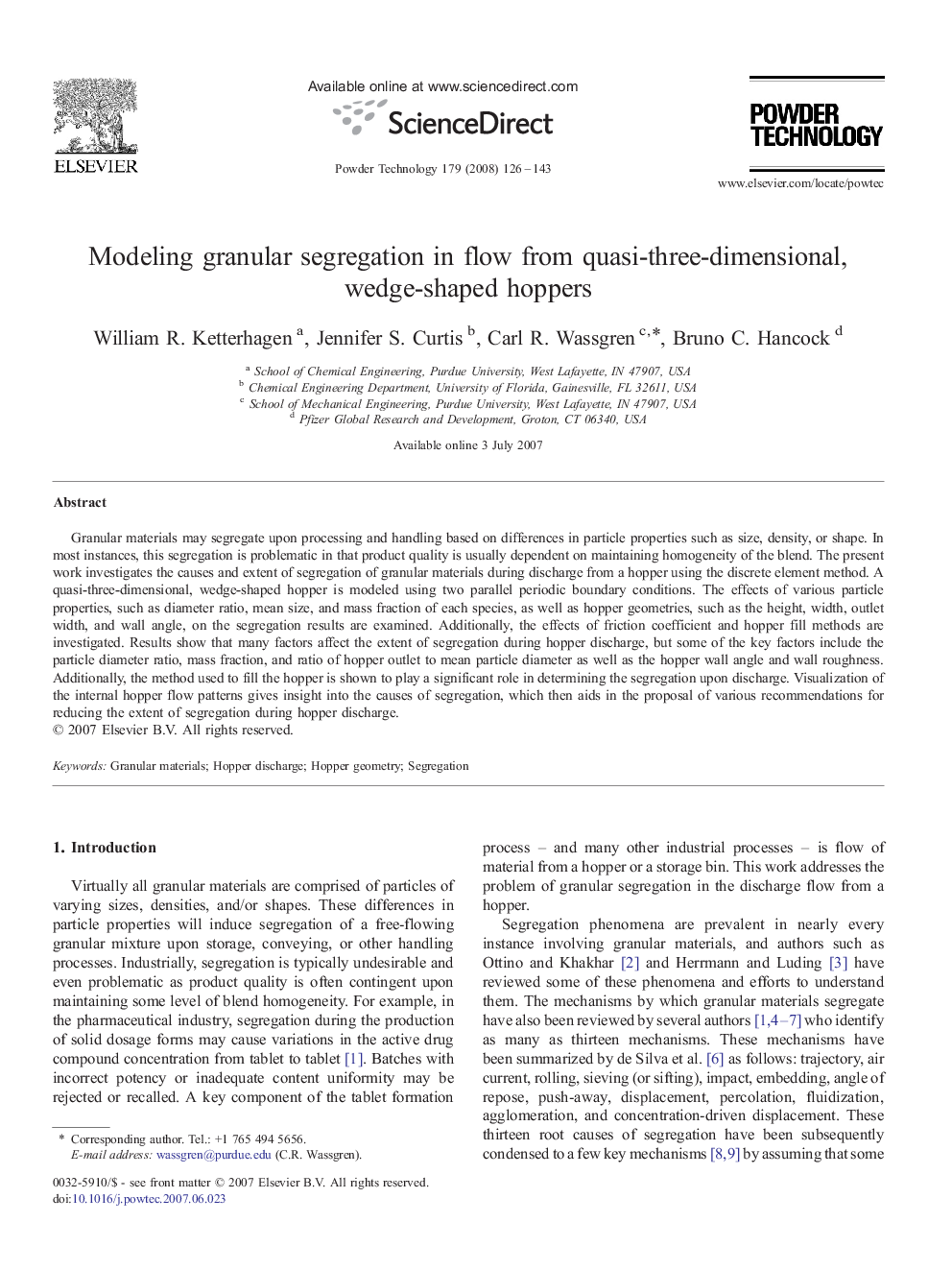| کد مقاله | کد نشریه | سال انتشار | مقاله انگلیسی | نسخه تمام متن |
|---|---|---|---|---|
| 238988 | 465788 | 2008 | 18 صفحه PDF | دانلود رایگان |

Granular materials may segregate upon processing and handling based on differences in particle properties such as size, density, or shape. In most instances, this segregation is problematic in that product quality is usually dependent on maintaining homogeneity of the blend. The present work investigates the causes and extent of segregation of granular materials during discharge from a hopper using the discrete element method. A quasi-three-dimensional, wedge-shaped hopper is modeled using two parallel periodic boundary conditions. The effects of various particle properties, such as diameter ratio, mean size, and mass fraction of each species, as well as hopper geometries, such as the height, width, outlet width, and wall angle, on the segregation results are examined. Additionally, the effects of friction coefficient and hopper fill methods are investigated. Results show that many factors affect the extent of segregation during hopper discharge, but some of the key factors include the particle diameter ratio, mass fraction, and ratio of hopper outlet to mean particle diameter as well as the hopper wall angle and wall roughness. Additionally, the method used to fill the hopper is shown to play a significant role in determining the segregation upon discharge. Visualization of the internal hopper flow patterns gives insight into the causes of segregation, which then aids in the proposal of various recommendations for reducing the extent of segregation during hopper discharge.
The work investigates the causes and extent of segregation of granular materials during hopper discharge using the discrete element method. The effects of particle properties and hopper geometry on the segregation results are examined. Results show that key factors include the particle diameter ratio, mass fraction, hopper wall angle, and wall roughness. Visualization gives insight into the causes of segregation.Figure optionsDownload as PowerPoint slide
Journal: Powder Technology - Volume 179, Issue 3, 1 January 2008, Pages 126–143